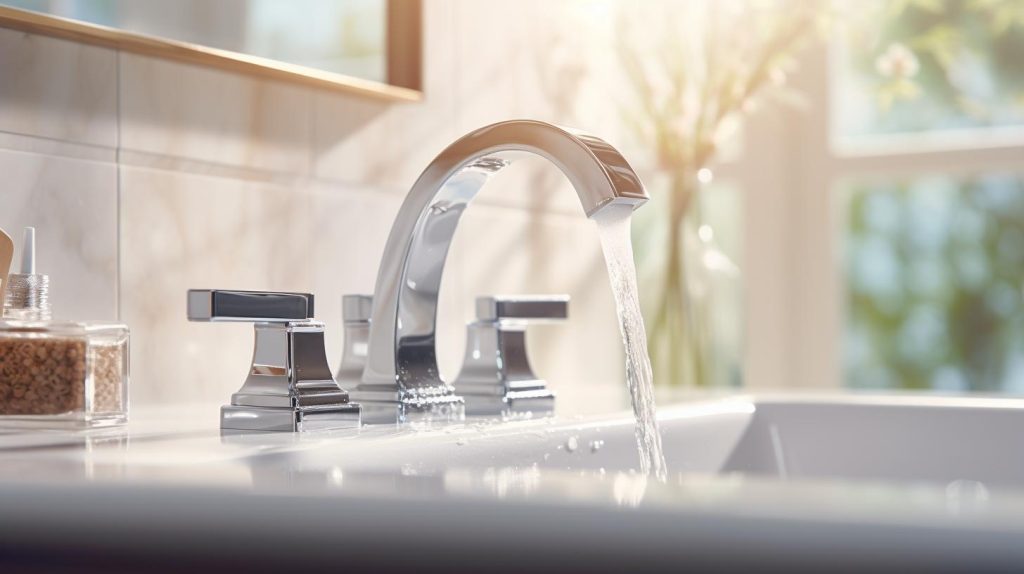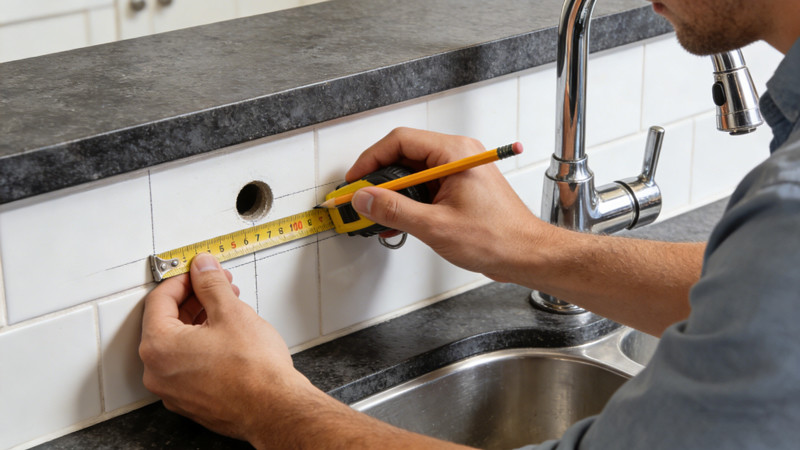
Chrome faucets and fixtures add a sleek, polished look to kitchens and bathrooms, enhancing the aesthetic with their shiny surface. However, keeping them looking pristine requires regular cleaning and proper care. Chrome can tarnish over time, accumulate water spots, and lose its sparkle if not maintained correctly. In this post, we’ll explore the best methods for cleaning and maintaining chrome faucets and fixtures, ensuring they retain their brilliant shine for years to come.
Why Regular Cleaning Matters
Chrome, while durable and resistant to corrosion, is prone to water spots, fingerprints, soap scum, and mineral buildup. When these build up over time, they can dull the surface of your chrome fixtures and make them look unappealing. Regular cleaning not only keeps your chrome shiny but also prevents any long-term damage that could occur due to neglect.
Supplies You’ll Need
Before diving into the cleaning process, gather these essential supplies:
- Microfiber cloths
- Non-abrasive sponge
- Mild dish soap or detergent
- White vinegar
- Baking soda
- Toothbrush (soft-bristled)
- Spray bottle
- Paper towels
- Olive oil (optional for polishing)
Having these items on hand will make cleaning your chrome faucets easy and efficient.
Step-by-Step Guide to Cleaning Chrome Faucets and Fixtures
1. Daily Wipe Down
The easiest way to maintain chrome fixtures is by incorporating a daily wipe-down into your routine. Water droplets left to dry on chrome surfaces can result in mineral deposits and water spots, especially in areas with hard water. Simply use a microfiber cloth to gently wipe down the faucet after each use. This quick step will prevent water spots from forming and reduce the need for deep cleaning.
2. Mild Soap and Water Cleaning
For routine weekly cleaning, start by mixing a few drops of mild dish soap with warm water. Wet a microfiber cloth or a soft sponge with the soapy solution and gently wipe down the chrome surface. This method is effective for removing dirt, grime, and light soap scum.
- Tip: Never use abrasive sponges or scouring pads on chrome fixtures, as they can scratch the surface and dull the shine. Stick to soft materials like microfiber cloths or soft-bristled brushes for cleaning.
Once you’ve wiped down the surface, rinse the chrome with clean water to remove any soap residue, which can also leave spots. Dry the surface with a clean cloth or paper towel to prevent water stains from forming.
3. Removing Stubborn Water Spots with Vinegar
If you notice hard water spots that won’t come off with just soap and water, it’s time to bring out white vinegar—a natural cleaning agent. Vinegar is excellent at dissolving mineral deposits without damaging the chrome finish.
- Steps:
- Mix equal parts white vinegar and water in a spray bottle.
- Spray the solution onto the affected areas.
- Let it sit for 5-10 minutes to break down the mineral buildup.
- Use a microfiber cloth or a soft sponge to gently scrub the surface.
- Rinse the area thoroughly with water and wipe it dry.
This method works wonders for faucets and fixtures exposed to hard water, helping to restore their shine.
4. Tackling Stubborn Buildup with Baking Soda
For areas with stubborn buildup or soap scum, baking soda is your best friend. It’s mildly abrasive, which makes it effective for removing tough grime while still being gentle enough to avoid scratching the chrome.
- Steps:
- Create a paste by mixing baking soda with a little water.
- Apply the paste to the affected areas.
- Use a soft-bristled toothbrush to scrub the buildup gently.
- Rinse with clean water and dry the surface with a microfiber cloth.
If you’re dealing with especially tough spots, you can combine the vinegar and baking soda methods by applying the baking soda paste after using the vinegar solution.
5. Cleaning Tight Spots
Faucets have small crevices that can trap dirt and grime. For cleaning these hard-to-reach areas, such as around the base of the faucet or the handle, use a soft-bristled toothbrush. Dip the toothbrush in a vinegar solution or soapy water and scrub gently around the tight spots. Rinse with water and dry with a cloth afterward to avoid water spots forming in those areas.
6. Polishing Chrome for Extra Shine
Once your chrome fixtures are clean, you can take an extra step to polish them and make them look brand new. A few drops of olive oil or baby oil on a microfiber cloth will give the chrome a gorgeous shine. Gently rub the oil onto the chrome surface, then buff it with a dry cloth. This will not only enhance the shine but also help repel water and dust for a longer-lasting clean.
7. Preventing Tarnish and Buildup
The key to maintaining the shine of chrome faucets and fixtures is prevention. Here are some tips for keeping your chrome in great condition:
- Use a water softener: If you live in an area with hard water, consider installing a water softener. This will reduce the amount of mineral buildup on your chrome surfaces, making them easier to clean.
- Dry after use: Always dry your chrome faucets and fixtures after use, especially if water has splashed onto them. This prevents water spots from forming and helps reduce the frequency of deep cleaning.
- Avoid harsh chemicals: Strong chemical cleaners, including bleach and ammonia, can damage the chrome finish. Stick to gentle, natural cleaning solutions like vinegar and baking soda for safe, effective results.
- Polish regularly: Polishing your chrome fixtures every few weeks with a small amount of oil or chrome polish will keep them looking bright and protect against tarnishing.
Common Mistakes to Avoid When Cleaning Chrome
Chrome is delicate and can scratch easily, so it’s important to avoid some common mistakes:
- Avoid abrasive materials: Never use steel wool, harsh scouring pads, or any abrasive materials when cleaning chrome. These will scratch the surface and cause dulling.
- Don’t leave vinegar on for too long: While vinegar is great for removing mineral deposits, leaving it on the chrome surface for an extended period can damage the finish. Always rinse it off thoroughly.
- Steer clear of harsh chemicals: Avoid using strong cleaning chemicals like bleach or ammonia, as they can harm the chrome finish and cause discoloration.
Conclusion
Keeping your chrome faucets and fixtures clean is not a complicated process, but it does require regular attention. By incorporating simple cleaning methods, such as daily wipe-downs and weekly vinegar treatments, you can maintain the shiny, polished look of your chrome fixtures. With the right care, your chrome faucets will continue to shine for years to come, adding a touch of elegance to your kitchen or bathroom.







